We believe we’ve located the area where John Gallagher and Hannah Roarty lived in the early 1800s.
What was their life like?

The Rosses and Gweedore
We found Gallaghers and Roartys in a handful of townlands on Donegal’s northwest coast. We narrowed the search, finding Dugans and Duffys in Meenderrynasloe. We have a DNA relative from Annagry. These townlands are in The Rosses and Gweedore Districts.
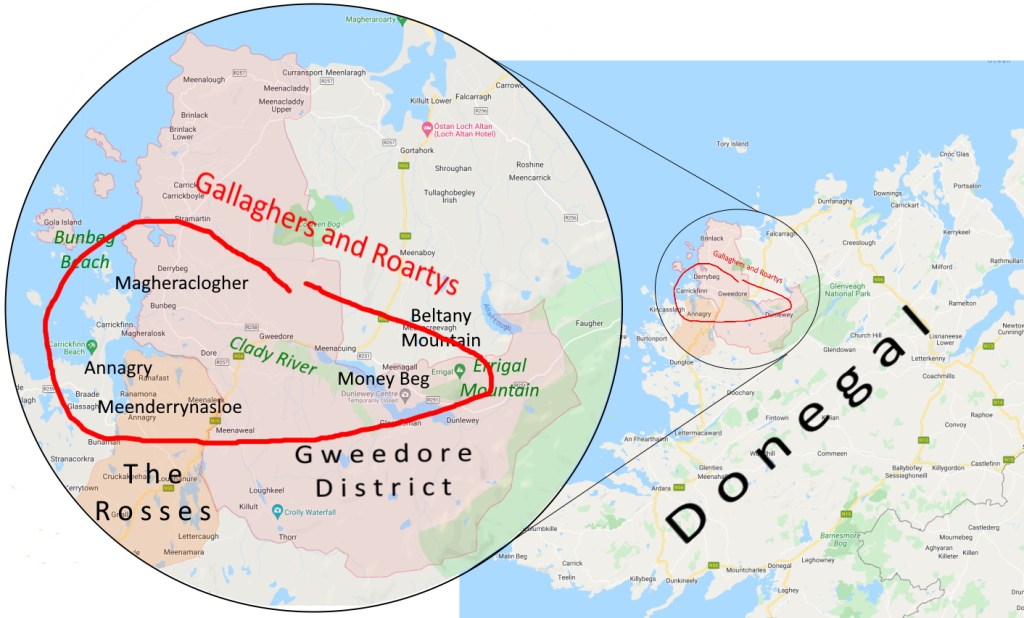
A quick history
Why were Gallaghers living in The Rosses and Gweedore on the northwest coast of Donegal? Why did Northern Ireland split to remain a part of the United Kingdom?
The answer to those two questions begins with the Plantation of Ulster.
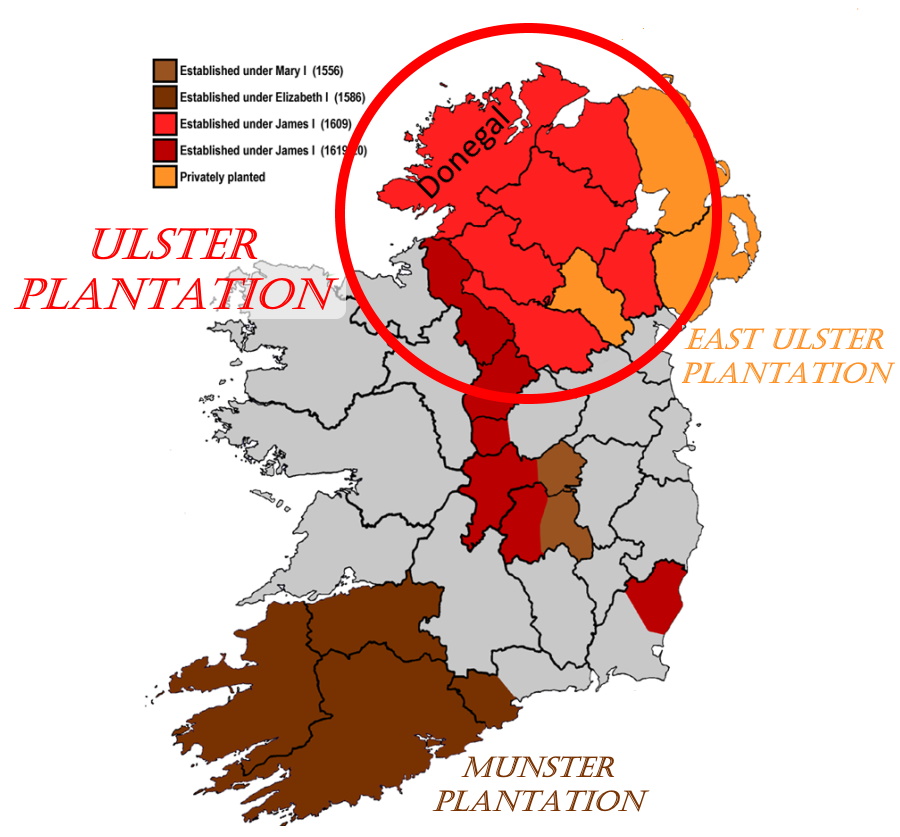
Plantations in 16th- and 17th-century Kingdom of Ireland involved the confiscation of Irish-owned land by the English Crown and the colonisation of this land with settlers from Great Britain. The Crown saw the plantations as a means of controlling, anglicising and ‘civilising’ parts of Ireland.
Plantations of Ireland – Wikiwand
The most ambitious of these was the Plantation of Ulster, beginning in 1606. The British confiscated all the land in six counties, including Donegal, and set about redistributing it to English and Scottish immigrants. The British landholders were to import their tenant farmers from Scotland or England. Furthermore, the new British landholders were banned from selling any of their land to native Irish.
During the 17th and early 18th centuries, over 80,000 English and Scottish immigrants took these lands and settled in the north of Ireland. That’s why Northern Ireland was loyal to Great Britain, and why it was partitioned in modern times.
The previous Irish Catholic landholders were granted one quarter of their previous holdings, to be located in the Barony of Kilmacrenan. Only a few dozen Irish were granted estates.
The Barony of Kilmacrenan includes The Rosses and Gweedore Districts.
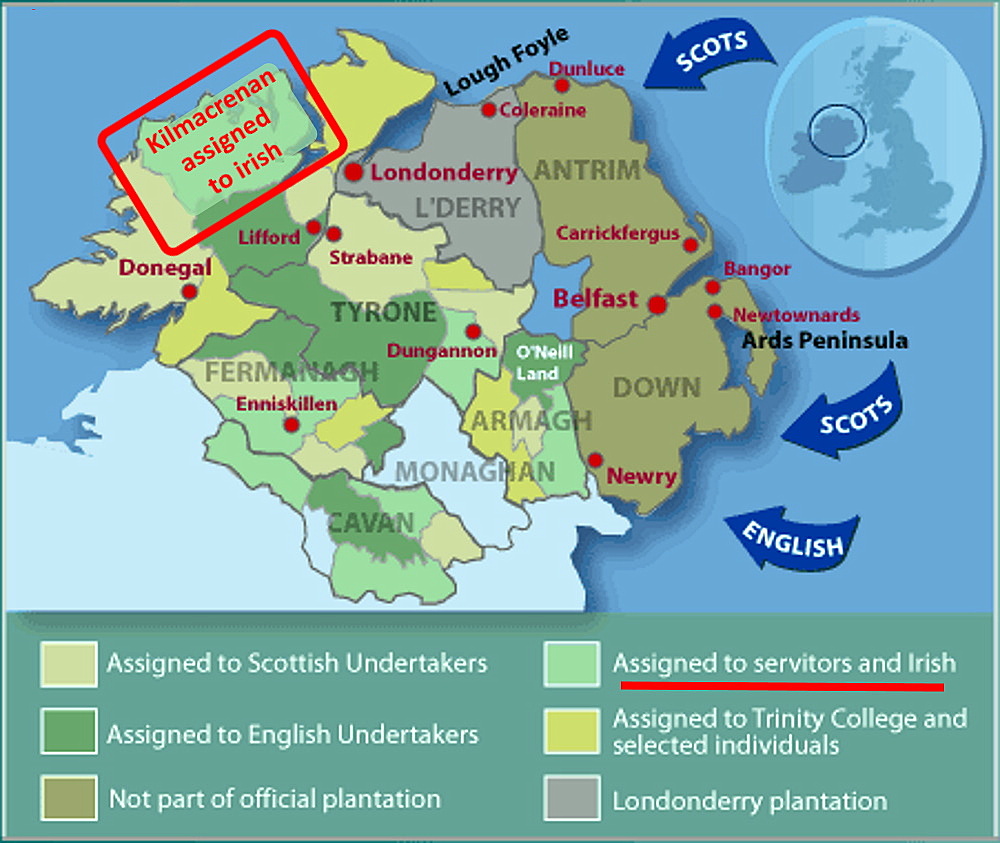
The Irish peasants had no land to begin with. They were to be relocated. Many moved to the Irish-designated Barony of Kilmacrenan. Our Gallagher ancestors were probably among those who relocated.
The protestant Church of Ireland was granted all the churches and land previously owned by the Catholic Church.
The Ulster plantation was one cause of the 1641 Irish Rebellion, during which thousands of settlers were killed, expelled or fled. After the Irish Catholics were defeated in the Cromwellian conquest of 1652, most remaining Irish Catholic-owned land was confiscated and thousands of English soldiers settled in Ireland.
Plantations of Ireland – Wikiwand
The Rosses and Gweedore
John Gallagher and Hannah Roarty were born in The Rosses or Gweedore around 1800. Their families had probably relocated here during the 1600s and 1700s.
Gweedore is a small area in the Northwest Corner of Donegal. The coastal area is a low-lying plain, mainly below 200 ft in altitude. The inland boundary of the Gweedore area are high mountains. The area is covered with thousands of lakes and peat bogs and is generally treeless. It is the peat bogs, however, that made intensive settlement possible as they provide the only source of fuel.
History of Gweedore – Tim O’Sullivan
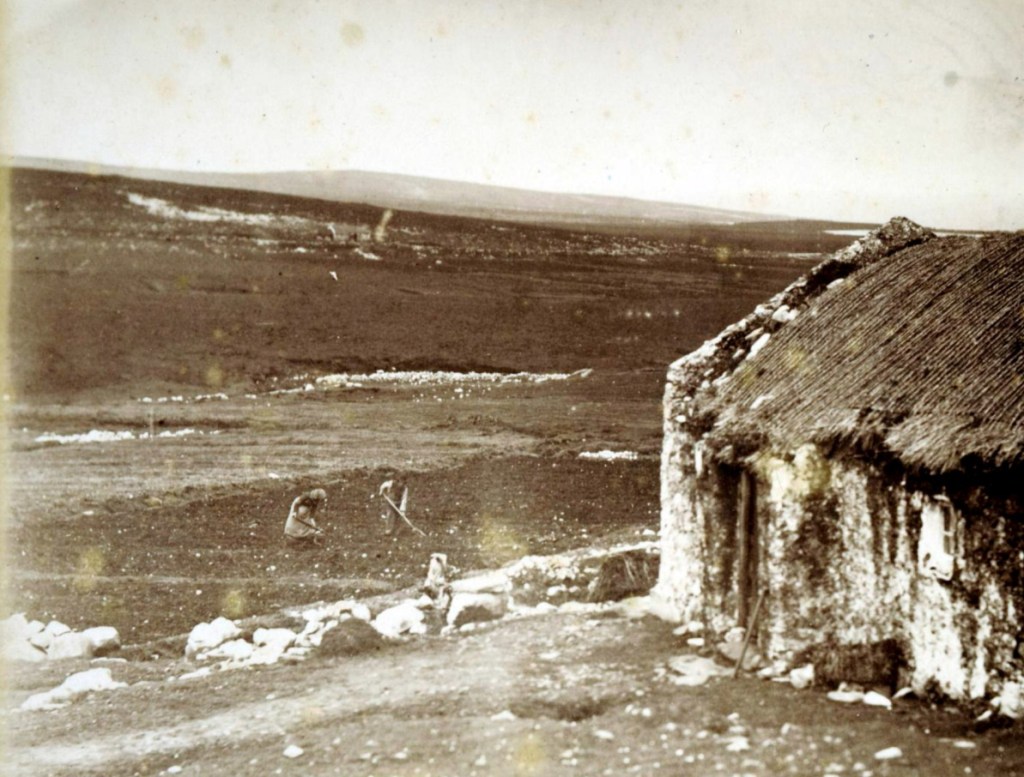
Ed. Note: We’re talking about lifestyles in the early 1800s, before photography. I’ve included photographs from late 1800s to help convey the lifestyle. But these aren’t period photos, they’re taken 50 to 80 years later.
Rundale
The Rosses and Gweedore were remote. There were no roads. The inhabitants were self-sufficient and independent. They lived meager lives.
Many didn’t have landlords, and others didn’t pay their landlords. They grazed their sheep and cows on the mountainside bogs, and planted in communal fields. Most resources were communal. This was known as the Rundale system.
The rundale system of agriculture consisted of nucleated villages known as clachans.
The main “clachan” area where the small thatched cottages were concentrated, was situated in a cluster on the best land (the infields) which was surrounded by mountain or grazing land of inferior quality (the outfields) where the livestock was grazed during summer or dry periods.
In the remote western areas of Ireland where the rundale system was most commonly seen, the land was a complex mixture of arable, rough and bogland. It was a difficult task to ensure that each tenant had an equal share of good and poor land.
Rundale – Wikipedia

Peat
There weren’t many trees, so wood was scarce. The area was covered with peat bogs. Peat, or turf, was matted and decaying grass and other plant materials. It was the go-to material for many purposes. Foremost it was the fuel for fire, so all cooking and heating was done using turf. People slept on turf beds and sat on turf chairs.
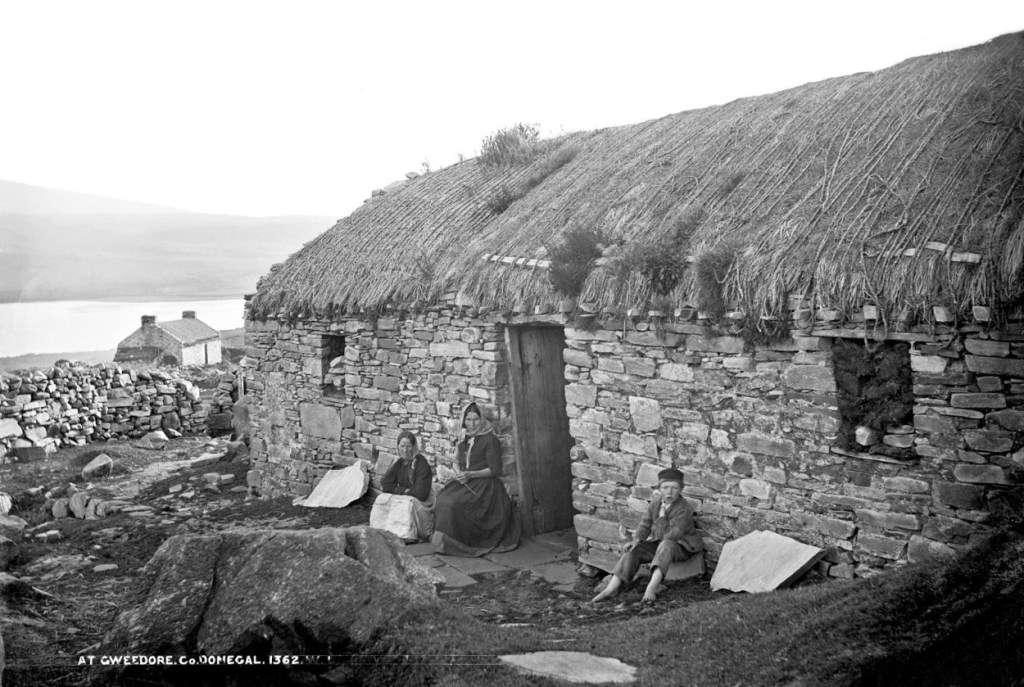
It was used for roofing material and sometimes their entire cottage was built of turf.

Food
As you’ve guessed, the people fed and clothed themselves.
They grew potatoes (to eat) and oats (to pay rent).
Surprisingly, not many mainland residents were fishermen. That was left to those who populated the islands off the coast. Boats were an expensive investment, and precious salt was needed to preserve the catch. Those near the coast could forage for urchins and seaweed.
The potatoes were cooked in a pot, then drained in a basket called a skib (sciob). The skib was placed atop the cooking pot to keep the potatoes warm, and the family sat around and ate the potatoes with their hands. There might be a bowl of “kitchen” placed in the center of the skib in which to dip the potato. “Kitchen” might be buttermilk, or salted cod water, or boiled seaweed, or anything else the cook may have that could add flavor.
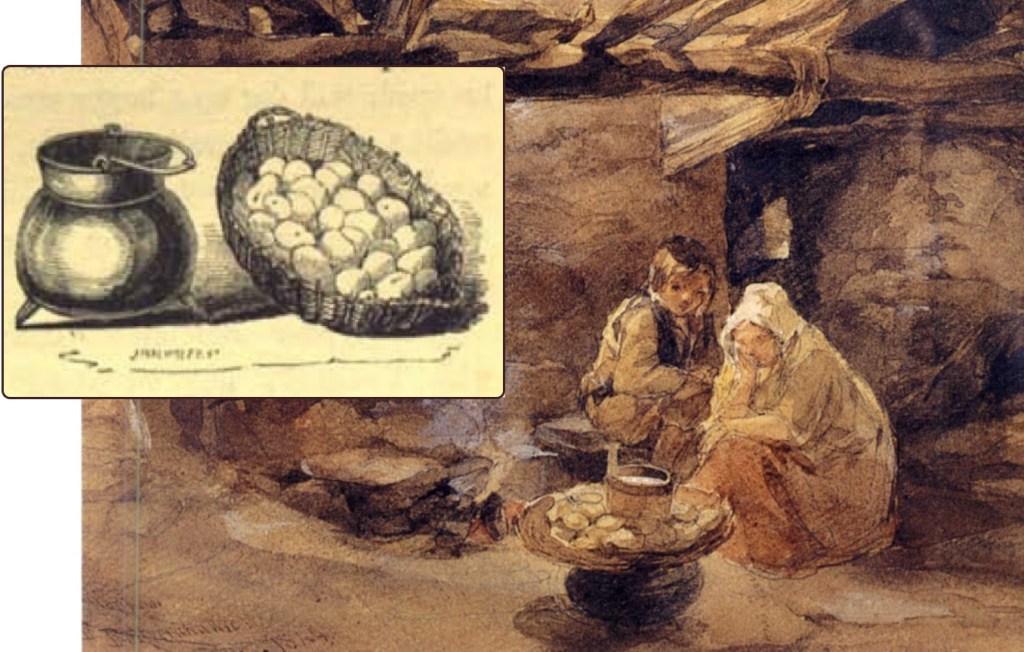
Marriage
John Gallagher and Hannah Roarty married, probably around 1820 to 1825. Most marriages were done in the home or outdoors. There was not a Catholic Church nearby in 1820, so perhaps a traveling priest did the honors. There was no ring or wedding dress.
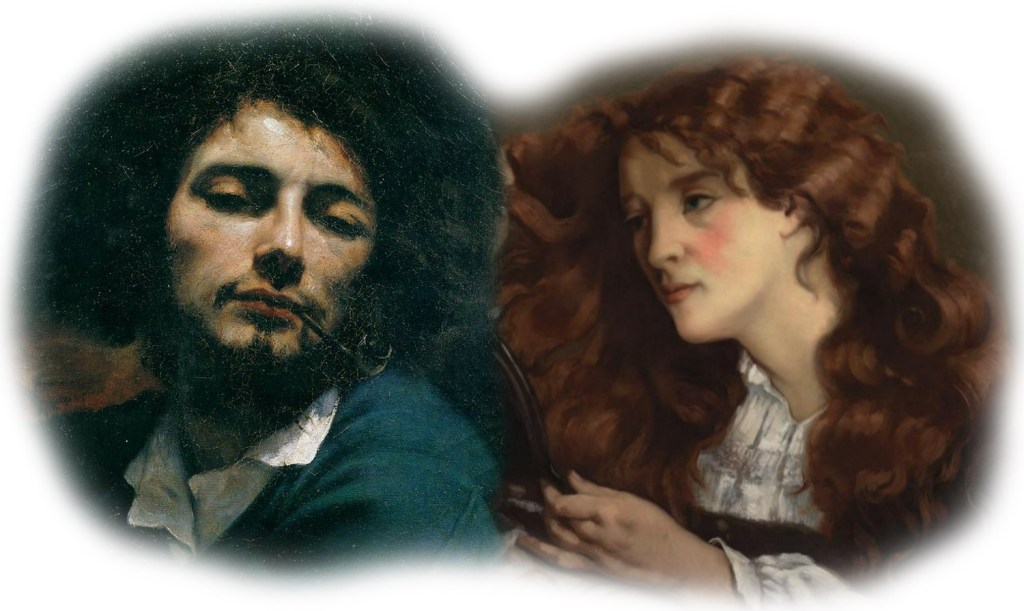
May God be with you and bless you. May you see your children’s children. May you be poor in misfortunes and rich in blessings. May you know nothing but happiness from this day forward.
Irish Marriage Blessing
The married couple may have lived in one of their parents’ households. Multi-generation households were common. Maybe a cup of poteen celebrated the wedding. Poteen is a strong whiskey made from potatoes. The word means “little pot.”
John and Hannah had hopes and dreams. I wish we could ask their thoughts.
Children
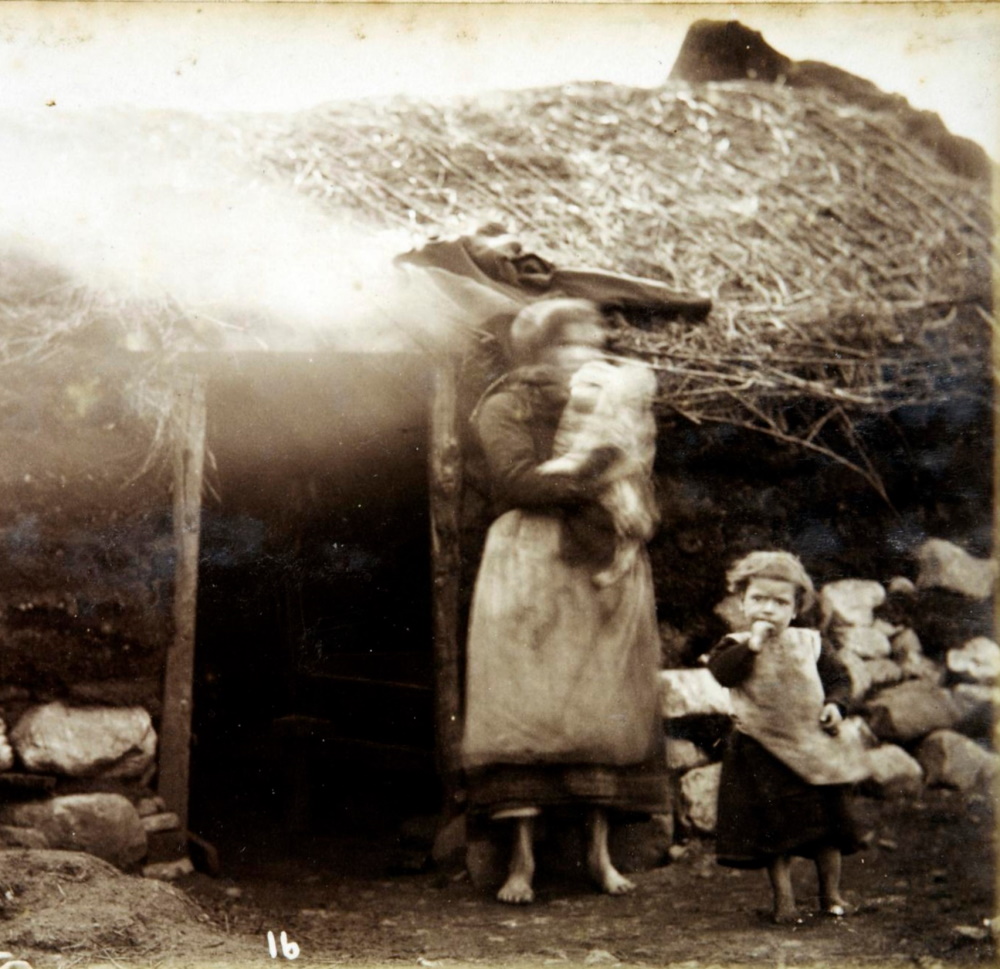
Patrick Gallagher was born to John and Hannah Gallagher in 1827.
Michael Gallagher was another son. I’m guessing he was younger, but we don’t know. We’ll meet Michael in a future story. Maybe there were other siblings too.
Patrick grew up and came of age in the 1830s.
Hardscrabble
We’ve gotten a feel for life in The Rosses and Gweedore in the 1820s. It was difficult. But things were about to get worse.
Nibbles Extra Credit – Beyond 2022
Beyond 2022 is an Irish government project to restore historical documents lost in the Record Treasury fire of 1922. The project’s website went online on June 30, 2022, one hundred years after the Four Courts fire.
It’s an ongoing effort, with more to be digitized and added. For now, many documents are online and searchable.
We were hoping for restored census records from 1821, 1831, 1841, and 1851. Unfortunately, no luck.
But there are some documents that will help us understand the life and times of our ancestors. We’ll include this information in our future stories.
You can take a virtual tour of the Record Treasury. https://vrtour.virtualtreasury.ie/
Timeline
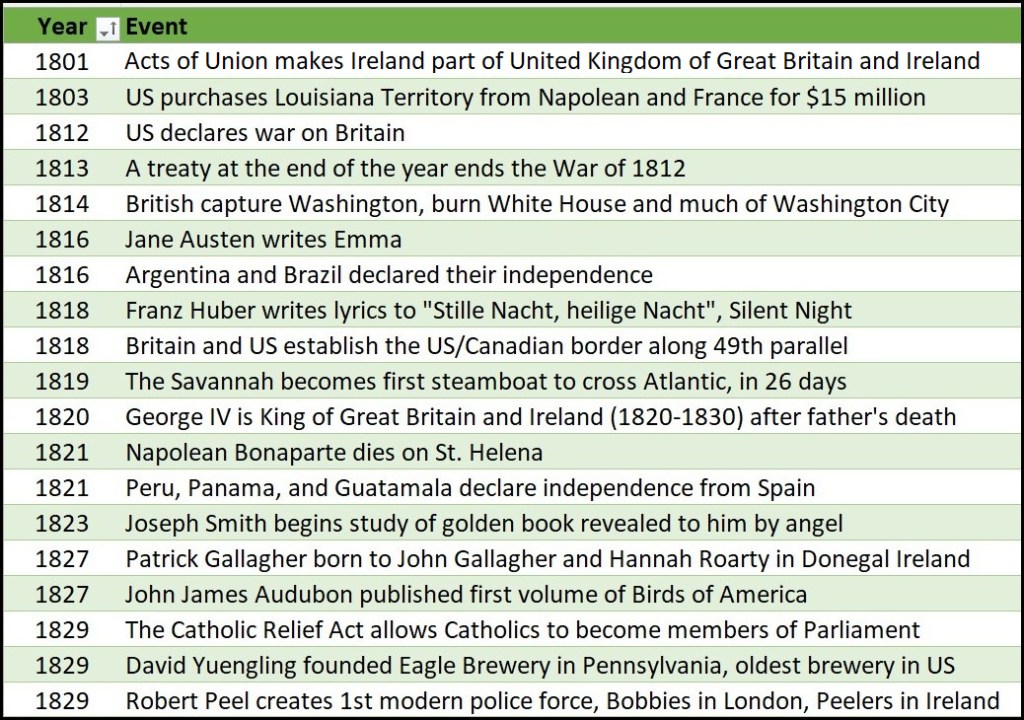
Sources
- Photos – family in cottage, and woman spinning – Remarkable Old Photos of Ireland – Irish Archaeology – http://irisharchaeology.ie/2016/01/remarkable-old-photos-of-ireland/
- Quote and map – Plantations of Ireland – Wikiwand – https://www.wikiwand.com/en/Plantations_of_Ireland
- Map – Plantation of Ulster – War and Conflict – https://www.bbc.co.uk/history/british/plantation/settlement/index.shtml
- Quotes – History of Gweedore – Tim O’Sullivan – http://freepages.genealogy.rootsweb.com/~donegal/chapter_one.htm
- Image – Gweedore – people working and cottage – James Glass – https://www.nmni.com/collections/history/photographs/james-glass-album/belumy3903913
- Image – Donegal – Gweedore – cottage – https://catalogue.nli.ie/Record/vtls000335305
- Image – The Potato Pot and Basket – Ireland – Mr. and Mrs. S.C. Hall – Volume 1 – 1841 – https://www.askaboutireland.ie/aai-files/assets/ebooks/50-52%20Ireland/50%20Ireland%201.pdf
- Image – Irish Peasants in a Cottage – Francis W Topham – 1844 – artnet.com
- Quote – Rundale – Wikipedia – https://en.wikipedia.org/wiki/Rundale
- Image – Donegal – Gweedore – Magheraclogher natives – https://catalogue.nli.ie/Record/vtls000324818
- Image – The Irish Woman – Gustave Courbet – 1866 – Nelson-Atkins Museum – Kansas City – https://nelson-atkins.org/fpc/nineteenth-century-realism-barbizon/506/
- Image – Man with Pipe – Gustave Courbet – 1848 – Wikimedia – https://commons.wikimedia.org/wiki/File:Gustave_Courbet_-Self-Portrait(Man_with_Pipe)_-_WGA05491.jpg
- Image – Gweedore – woman and child – https://www.nmni.com/collections/history/photographs/james-glass-album/belumy3903927
- Music – Waltzing Down the Aisle – Kathleen Boyle – Seamus Connolly Collection – Soundcloud – https://soundcloud.com/connollymusiccollection
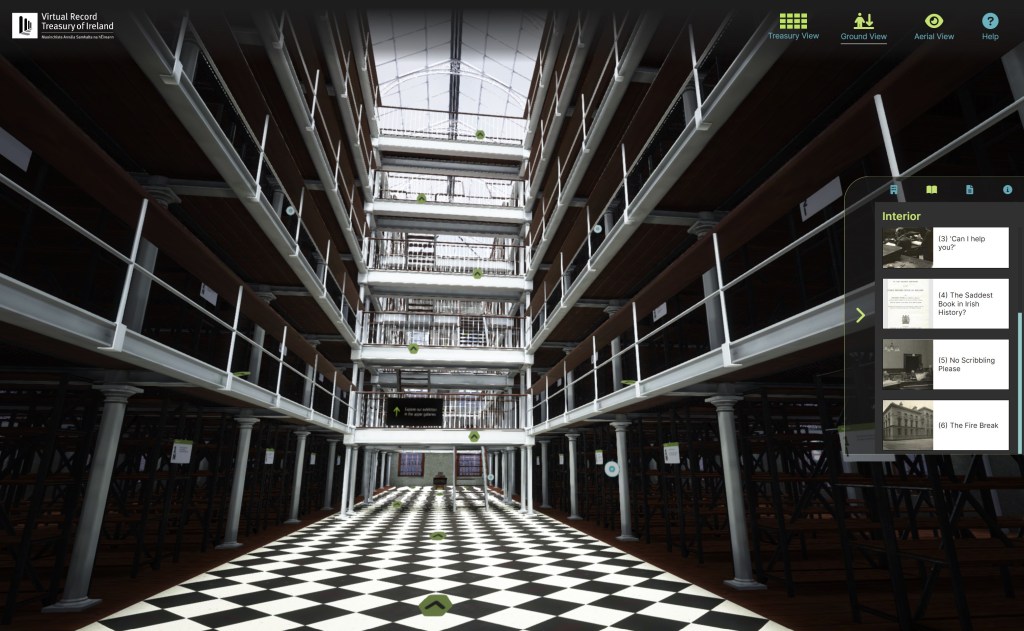
Very interesting. I have ancestors from Counties Tyrone and possibly Fermanagh, the maps with the settlements’ timelines and origins are very intriguing. Thanks again for another helpful post.
LikeLike
I’m glad it was helpful. I was intrigued by the Ulster Plantation and how its roots played out with the separation of Northern Ireland centuries later.
LikeLiked by 1 person
As always I love your research. Most interesting. So glad to see Joseph Smith included in your timeline. He is truly one of my favorite characters.
LikeLike
I wasn’t aware of your long-held reverence. I can see that sly Brenda smile shining through this message.
LikeLike
Hi ,are u in ancestry and have u done Ur DNA ? My grandmother was Mary Gallagher from rannafast on the rosses I’d luv to see if we r related .my dad is 90 and alive and well
LikeLike
Hi Sandra,
Yes, we’ve done DNA. I didn’t see an Ancestry DNA match for your name. Is the test under your dad’s name? Would be great to see if your grandmother Mary Gallagher is related.
Mark Jarvis
LikeLike
We have all done one dads is Robert Humphrey Humphrey family tree , mine is Sandra Johnston ,Johnston/Humphrey tree and my son’s in Raymond Johnston . I luv ur research very interesting . We recently went to rannafast n gweedore ,went to Duffy’s bar n saw Ned Gallagher’s stone . He was claimed be strongest man and a bare Knuckle fighter champion . 🙈 Ps I’ve also done Gedmatch kit HL1405744
LikeLike
Hi Sandra,
I found Raymond (raymondjohnston) as a match with my wife’s mother Kathleen Gallagher Teply (K.G.), but couldn’t find you or your dad as a match. Don’t know why.
Wish I could have joined you for a pint at Duffy’s.
Mark
LikeLike
Weird ! I will check my Gedmatch n see thanks for lettin me know
LikeLike
We r a match 5rh to 8th cousin with KG Kathleen Gallagher will u send me ur email mark . Some experience mark , we stayed in wee b&b beside Duffy’s highly recommend it !! I have pics of Gallagher’s homestead still standing ! IL send an invite to my tree
Sandra
LikeLike
Great, thanks Sandra. My email is markcjarvis@hotmail.com.
Would love to see pics of Gallagher homestead. Someday we’ll get to visit there.
LikeLike
Done feel free to use or add any info or photos etc .if I can help let me know . We r in Bangor in Northern Ireland all family live nearby x
LikeLike
Congratulations on your interesting and well-constructed website. Just one tiny niggle (but I’m like that!): Your timeline states at in 1801 “Ireland becomes part of Great Britain”. There’s a bit of confusion of geography and politics here. Great Britain refers to the island comprising England, Scotland and Wales. Henry VIII declared himself King of Ireland as well as King of England, but they were two separate kingdoms sharing the same king, and remained so until the Union of 1801. The union of England and Scotland in 1707 created the Kingdom of Great Britain. The 1801 union created the “United Kingdom of Great Britain and Ireland” So Ireland became part of the United Kingdom, not a part of Great Britain. It was supposedly a union of equals, though in practice it never was. But don’t worry, even most people who live here are also uncertain about these constitutional niceties.
LikeLike
Hi Sean,
Thank you for the nice comment and the tiny niggle (I’m like that too!). I’ve corrected the timeline.
I like to add historical and cultural context to my family stories. But I invariably goof up and make mistakes. Luckily, you and my other editors point out errors so I can fix them.
Mark
LikeLike
Hi Mark
I’m in the process of putting together my own family stories online; it hasn’t gone live yet, but I’m anticipating an avalanche of corrections and advice!
Regards
Seán Boyle
LikeLike